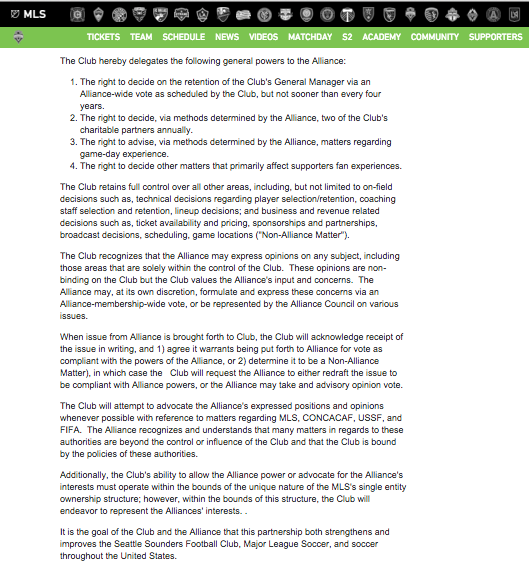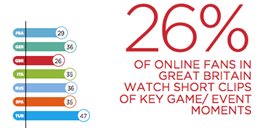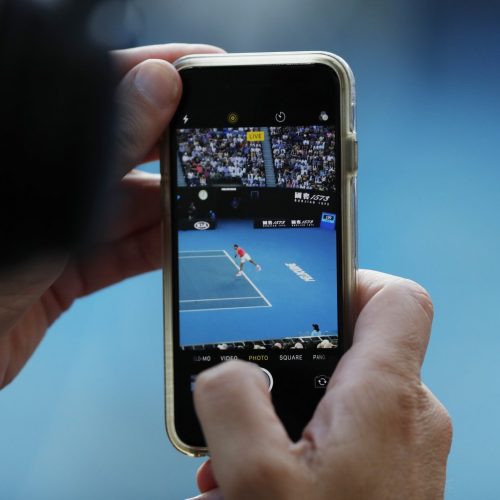Engage, or divorce…
Clubs throughout the world are now making more of a genuine effort to frequently engage with their ‘community’ using a number of interpersonal platforms, to not only grow their audience, but to give their fans/followers a sense of feeling and involvement.
Many clubs, particularly in football, have established fans forums, with the purpose of enhancing communication between fans and the club. It enables fans to give those who make decisions and implement services a fuller understanding of their views and the issues that directly affect them.
In my opinion, there is no better example of a sense of fan belonging and supporter importance than at Seattle Sounders FC. The Major League Soccer club doesn’t just claim that fans are a significant stakeholder; they have established a unique relationship between the club and the fan.
Whilst clubs in various sports across the globe offer their fans a similar platform to influence the club, none have had the same meaningful impact as Seattle’s. So meaningful that they have been successful in retaining their ‘customers’, as the Sounders average 2015 home attendance ranks second in the Western Hemisphere, overtaking English Premier League clubs Liverpool and West Ham in the global rankings.
New technology is vital to top-level sports clubs, as sport content is readily available through a number of devices. Through various channels that clubs are now active on, the likes of AFC Bournemouth now have the ability to market their product to an ever growing global, Premier League audience. So, now, in 2016, regardless of the level of fandom, any form of interaction (as little as a follow on twitter) is recognised and valued.

(Global Sports Media Consumption Report, 2014, highlighting how many fans from a variety of countries, consume sport through social media)
Whilst Facebook and Twitter are the two dominant mainstream social media platforms and are still extremely successful in executing their purpose, Snapchat, a relatively new application, is becoming a valuable asset to a clubs social media arsenal.
Snapchat has over 100 million daily active users. The majority of American based teams (NBA, NFL, NHL, MLB) are active with a purpose, creating unique content targeted predominantly towards millennials. With 33% of millenials using Snapchat (22% of millenials on twitter), a club may well be seen as losing if they are not attracting a young audience.
Such growth and popularity is reiterated in the Premier League, as in August 2015, only 35% of clubs were active. 6 months on that figure rose to 70%, meaning 14 of the top flight clubs are active.
Snapchat serves a number of purposes. Whilst clubs use the tool to tell a raw, real time story on a match day to engage both potential and existing fans, it is also subliminally used to organically promote the game, including sponsors in a non-intrusive way.
In some cases, official club accounts has enabled direct connections between fans and athletes, as players ‘take over’ official accounts for the day, giving followers of the account their own first person perspective. Continuing the light-hearted approach of sporting content, NBA players have done music parody videos that have proved popular.
Given those two different, relatively new and ever developing examples of fan engagement, a lot of people within sport go to a lot of effort to ensure that the content that clubs provide is appropriate and appealing. So, it begs the question, what’s the point?
The role of stakeholder engagement is due to grow as the next generation of digitally savvy fans who regularly used to instantaneous feedback continue to grow in numbers. To continue a growing fan base, teams and leagues must exploit fan intelligence platforms as well as providing first hand, insider content to ensure quality engagement and, most importantly, ticket sales and profitability.
*Andrew Clark is a grassroots marketing co-ordinator for English Super League side Wigan Warriors
About author
You might also like
Mallory Group Launches White Paper on the ‘New Normal’ for Sports Rights Holders
Sport is proving to be one of the high-profile business casualties of the Covid-19 pandemic. However, its slow and structured return will be a key factor in life entering the
The seven essentials for achieving successful sports branding
By Daniela McVicker When it comes to sports, great branding is a must. Your brand influences how people see your company or team. It helps you to forge connections with
Live Chat: A New Social Experience in Sports
Article written by John S. Kim, CEO and co-founder of global API company SendBird Social media rose to prominence throughout the world due to its potential for connection. Social channels provided the











